We had limited visibility when we reached the mixed open meadows near the picnic area
After yesterday’s exciting report of the cuckoo on Harbor Mountain, I was inspired to get up there last yesterday evening. I had limited time, and was not able to find the bird in the hour or so I was up there. So this morning after the early rain let up a bit, Connor, Rowan and I headed out. The third gate remains closed on Harbor Mountain road (due to a slide taking out part of the road), so we started walking the 1.5 miles up from there in an occasional light drizzle. Visibility dropped as we climbed through the low clouds. I had expected a more leisurely effort than I was forced to do yesterday evening with my limited time, but Rowan kept a brisk pace up the hill, and I found myself dripping inside and out as I worked to keep up with her. We made it to the picnic area a little after noon and stopped there for lunch under the shelter. We watched a junco gathering food while we ate. We could see cloud moving past as the moisture laden wind took the heat we had generated walking uphill, and by the time we finished eating we were all ready to get up and move again.
My first view was of a gray form through the mist
We checked all the picnic sites in the picnic are, but had no luck finding the cuckoo, so I said we could walk along the road over at least to the Harbor-Gavan Trail trail head. As we neared the viewpoint just off the road with a well-worn, but unofficial trail not far past the picnic area parking lot, I paused to take a closer look at some ground dogwood flowers (their identification is a problem I’ve been working on lately). Moments later, I heard Connor’s excited whisper – “I think that’s the cuckoo!” He pointed over to a snag near the viewpoint, but I only saw a flash of movement as it took off. Fortunately, it did not fly far, and we were able to keep an eye on it as we walked over to the viewpoint. From there I started taking pictures hoping that at least one would be identifiable if this was the only view we would get. As I was looking out to pick my way down a slope for a better angle, the cuckoo flew off in the direction of the picnic area, and we lost sight of it.
Connor stands watch in the mist
I asked Connor to stay at the viewpoint and watch, while Rowan went back along the road to the picnic area and I walked through the meadows in that direction. I hoped one of us would be able to see it and alert the others. Connor got impatient and started back to the road, and shortly after I heard Rowan calling, though I couldn’t understand her at first. Finally I was able to make out that she had seen the cuckoo near the picnic area parking, but it had flown back toward the viewpoint. So I turned back in that direction and discovered Connor was no longer there. I called to him to go back and watch, so he did that as I cut up to the road to check in more clearly with Rowan.
My first clear view of the Common Cuckoo
As I was walking back from getting a better understanding of where Rowan had seen the bird and which direction it had flown, I heard Connor calling over to say the clouds were lifting and he could see the water and islands below. Shortly after, that I heard him call out to let me know the cuckoo was back by the viewpoint and that I should be able to see it from the road. My first clear view of it was on a snag between him and I. It was there long enough for me to grab a photo before it flew off again. Fortunately, this time it stayed in the area of the viewpoint for a while, and I was able to get several more pictures (though all through a bit of cloud/fog that had settled back down again).
Mixed open meadow habitat where Common Cuckoo was hanging out
After moving between several perches near the viewpoint, I watched as the bird flew up across the road to the slopes on the uphill side. I chose to stay at the viewpoint while Connor and Rowan followed the bird over there and were able to get some good views (and photos, in Connor’s case) as it foraged over there for a little while. Before long it had flown back down near the viewpoint, and I was able to get some good views, including of the undertail coverts which looked white (rather than buffy) and help identify this bird as a Common Cuckoo (rather than the similar looking Oriental Cuckoo). Vocalization is another way to tell these species apart, but this bird never called while we were there. I didn’t think to try playing a recording of a Common Cuckoo until it had flown off shortly before we left. I think it may have been too far away to hear the recording from my phone, so I don’t know if it would have called in response. Vocalizations are apparently one good way to distinguish males from females. Shortly after the half-hearted attempt at playback, the clouds started dropping down more heavily and brought some rain with them. By this time we had been up there for close to 2 hours, and decided it was time to head back down to the car
Take a close look at the cuckoo’s bill in this picture and you can see the remains of what I think is a cranefly
Doing a little additional research at home, I learned that Common Cuckoos are brood parasites, laying eggs in the nests of other birds. As far as I can tell they are much smaller birds, and there’s an impressive photo on wikipedia of a Eurasian Reed Warbler feeding a young Common Cuckoo that already much larger than the adult warbler. Connor noted the similarity of this bird to Sharp-shinned Hawks, telling me that in other circumstances if he was unaware of the possibility of a cuckoo and not inclined to try for pictures, he probably would have walked on thinking it was a Sharp-shinned Hawk without looking too close. It seems the similarity of these birds with Sharp-shinned Hawks is advantageous, as their accipiter-like appearance gives them a little extra time to get an egg into the host nest, since the smaller birds are more wary of harassing them. Common Cuckoos favor open habitats where they eat insects, including hairy caterpillars that are not liked by other birds. I can’t be entirely sure what all this bird was catching, but my guess is that craneflies were one of the things (a guess confirmed somewhat by pictures where remains of what appear to be one were still in its beak).
My thanks again to Eric and Cathy Parker for finding and reporting this bird!


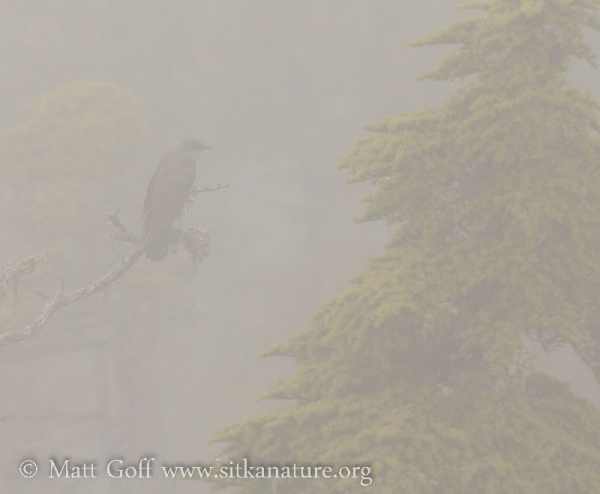
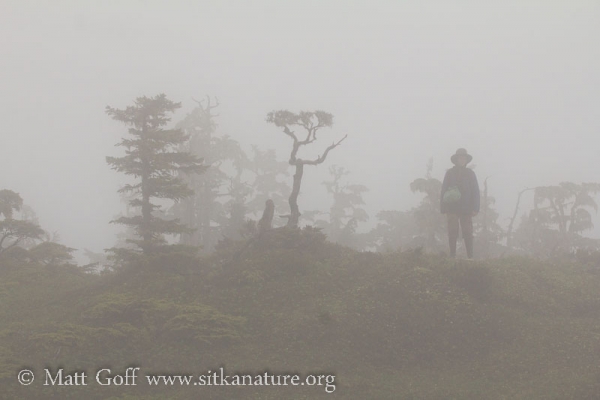
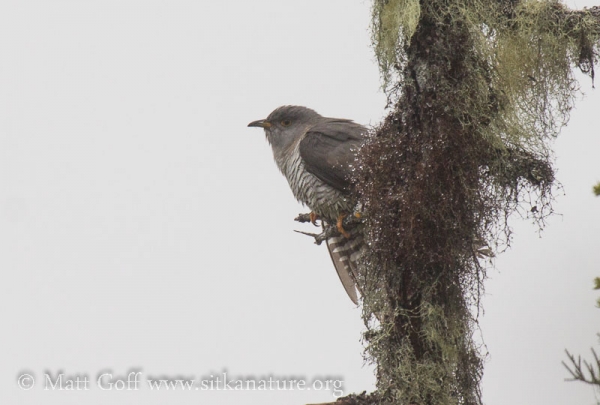

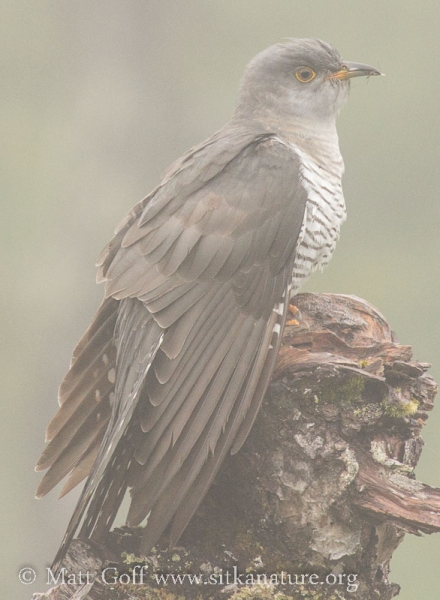
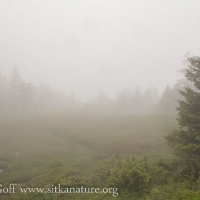
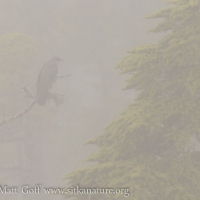
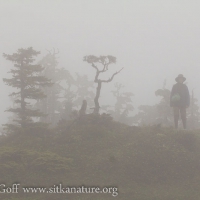
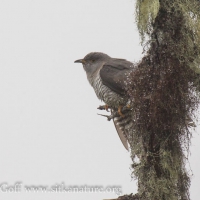
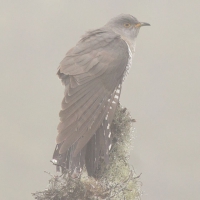
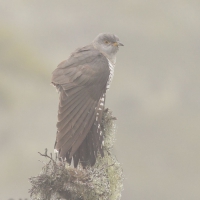
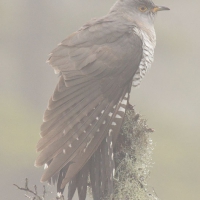
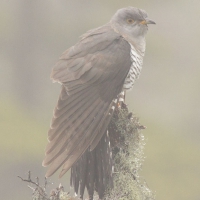
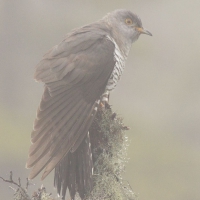
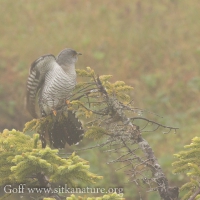
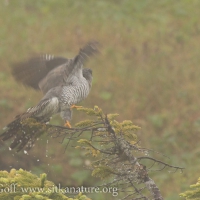
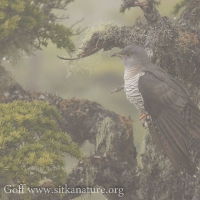
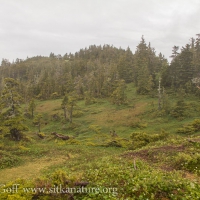
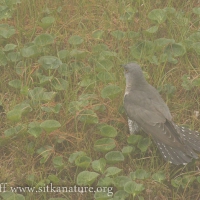
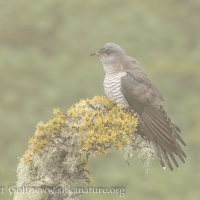
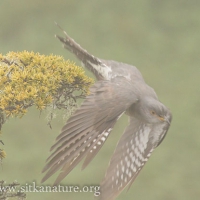
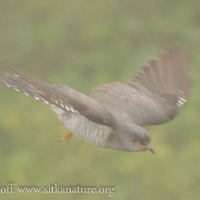
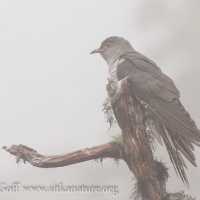
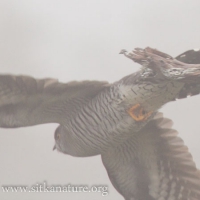
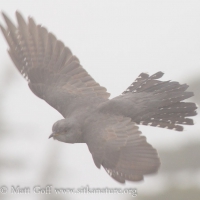
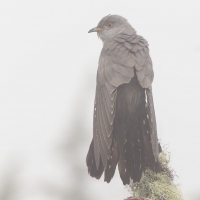
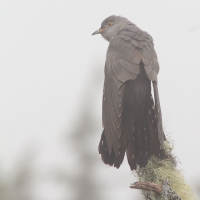
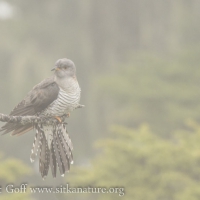
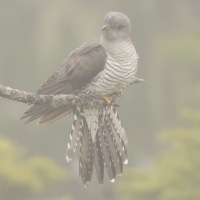
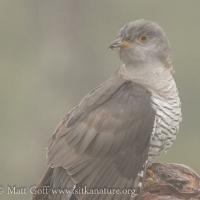
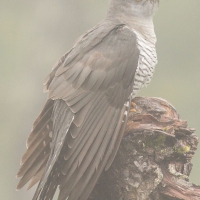
Thanks for all the pictures to illustrate your quest to find the cuckoo. Your pictures and comments, along with Rowan and Connor’s comments, gave a well-rounded description of your adventures. The cuckoo looks larger than I imagined cuckoos being.
Wonderful photos!!! So nice to see and now able to confirm definitively as a Common Cuckoo!